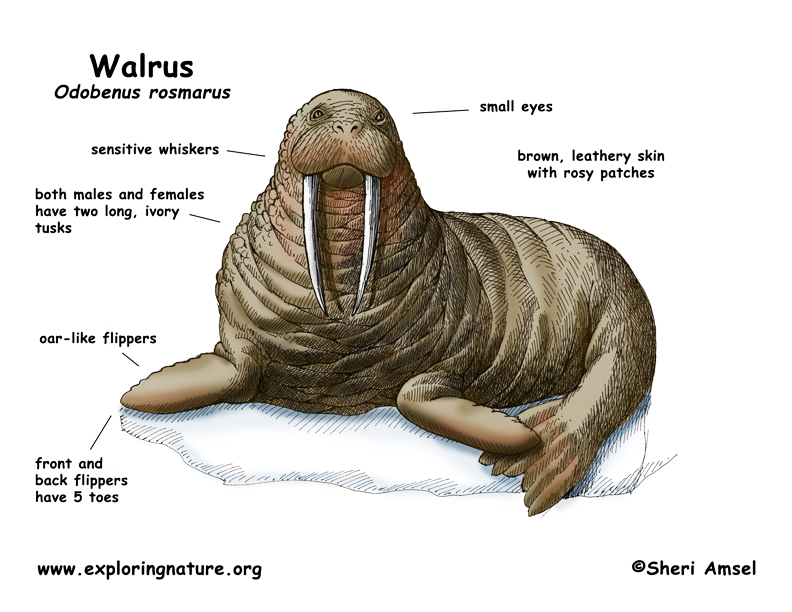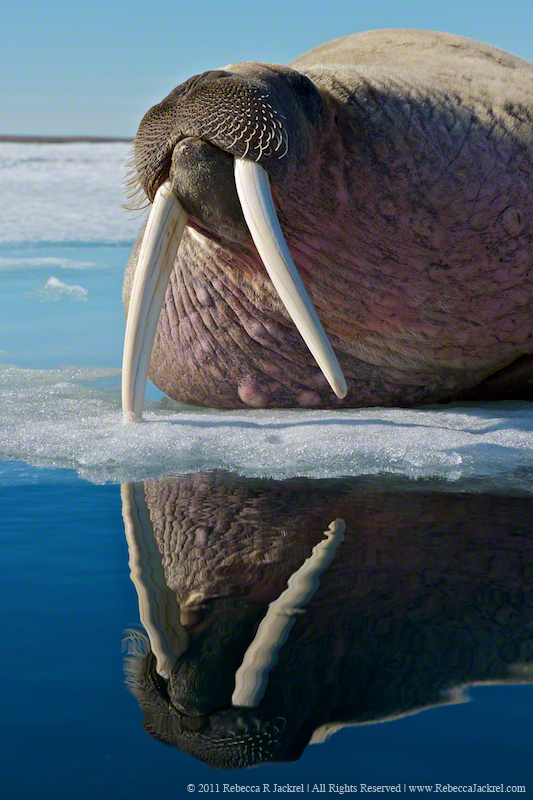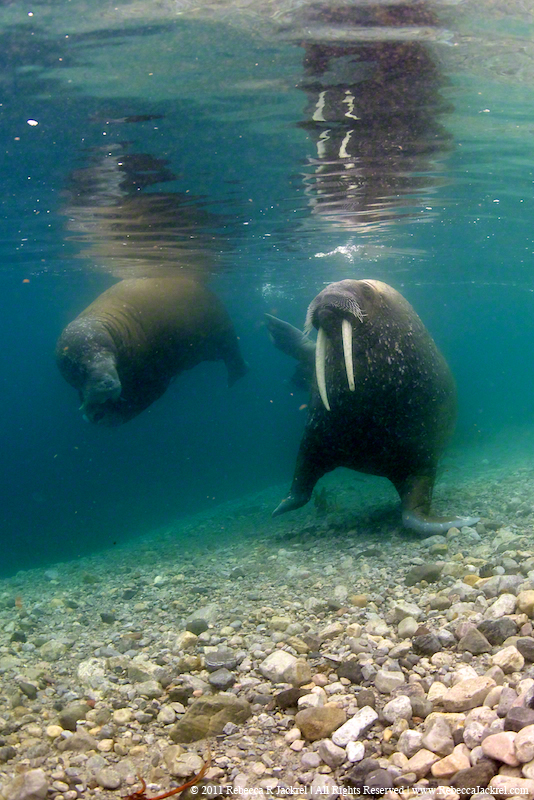Form and Function
The Walrus’s body has evolved in a way that makes it easy
for it to live in both the water and on the land.
In order to help them in the water,
walruses have various flippers to help them
navigate through ocean currents. Their back flippers help them power
through the water while their front flippers help them steer. This
helps the walruses navigate the water both quickly and swiftly to
help them catch prey easier a nd to also escape from potential
predators. Not only do
the flippers help in the water, but they also help them on the ice.
The skin underneath their flippers is rough and has little
bumps scattered across it which helps the walruses from slipping on
the ice (Svalbard 2013). The walrus’s hind limbs also help them on
both the land and ice.
Their hind limbs can be rotated to go underneath their body so that
their limbs are facing forward instead of behind them.
This also allows the walrus to move around on the land or ice
with ease.
nd to also escape from potential
predators. Not only do
the flippers help in the water, but they also help them on the ice.
The skin underneath their flippers is rough and has little
bumps scattered across it which helps the walruses from slipping on
the ice (Svalbard 2013). The walrus’s hind limbs also help them on
both the land and ice.
Their hind limbs can be rotated to go underneath their body so that
their limbs are facing forward instead of behind them.
This also allows the walrus to move around on the land or ice
with ease.
One of the most helpful
advantages that the walruses have are the shapes of their bodies.
Their body is elongated with a wider head and neck and
gradually narrows to the t ail.
This torpedo-shaped body gives the walruses many advantages.
First, the shape of the walrus’s body helps it to dive to the
bottom of the sea to be able to obtain food. Because the body is
shaped like a torpedo, it helps the walrus to plow through the water
straight to the bottom.
The walrus also has a blood adaptation that helps it to be able to
dive. They have a larger
amount of blood in their body in order to carry more oxygen.
About twelve percent of their body weight is attributed to
their blood as opposed to seven percent of a human’s body (Svalbard
2013). When they dive,
blood is also cut off from their skin, extremities, and stomach
(Svalbard 2013). This
allows more oxygen to stay w
ail.
This torpedo-shaped body gives the walruses many advantages.
First, the shape of the walrus’s body helps it to dive to the
bottom of the sea to be able to obtain food. Because the body is
shaped like a torpedo, it helps the walrus to plow through the water
straight to the bottom.
The walrus also has a blood adaptation that helps it to be able to
dive. They have a larger
amount of blood in their body in order to carry more oxygen.
About twelve percent of their body weight is attributed to
their blood as opposed to seven percent of a human’s body (Svalbard
2013). When they dive,
blood is also cut off from their skin, extremities, and stomach
(Svalbard 2013). This
allows more oxygen to stay w ithin their lungs and near the most
important organs such as the heart and brain.
The walrus’s body is usually grey or brown in color which
helps it blend in with its surroundings to hide from hunters or
other predators.
Finally, its skin is tough, wrinkled, and is coated with hairs.
Theses adaptations help the walrus to remain warm on the ice or in
the freezing water.
ithin their lungs and near the most
important organs such as the heart and brain.
The walrus’s body is usually grey or brown in color which
helps it blend in with its surroundings to hide from hunters or
other predators.
Finally, its skin is tough, wrinkled, and is coated with hairs.
Theses adaptations help the walrus to remain warm on the ice or in
the freezing water.
Now you know pretty much everything about the walrus! Check out the facts to see more miscellaneous information.